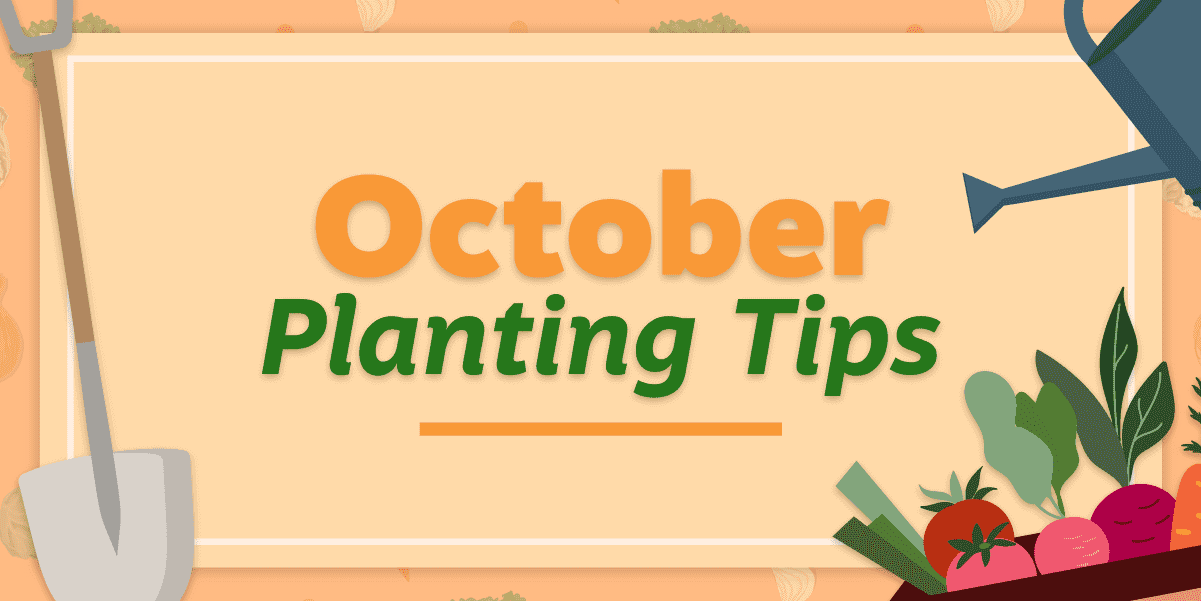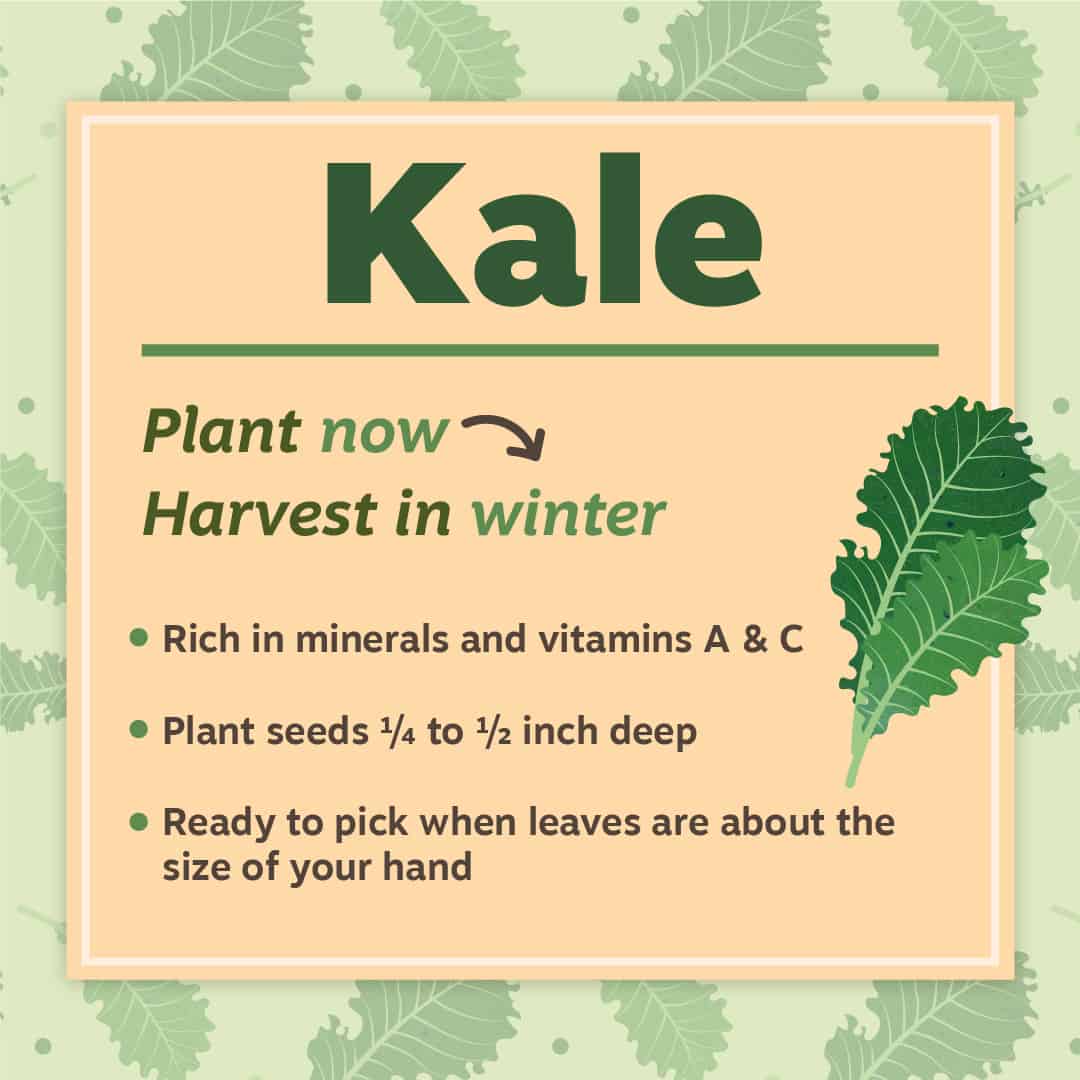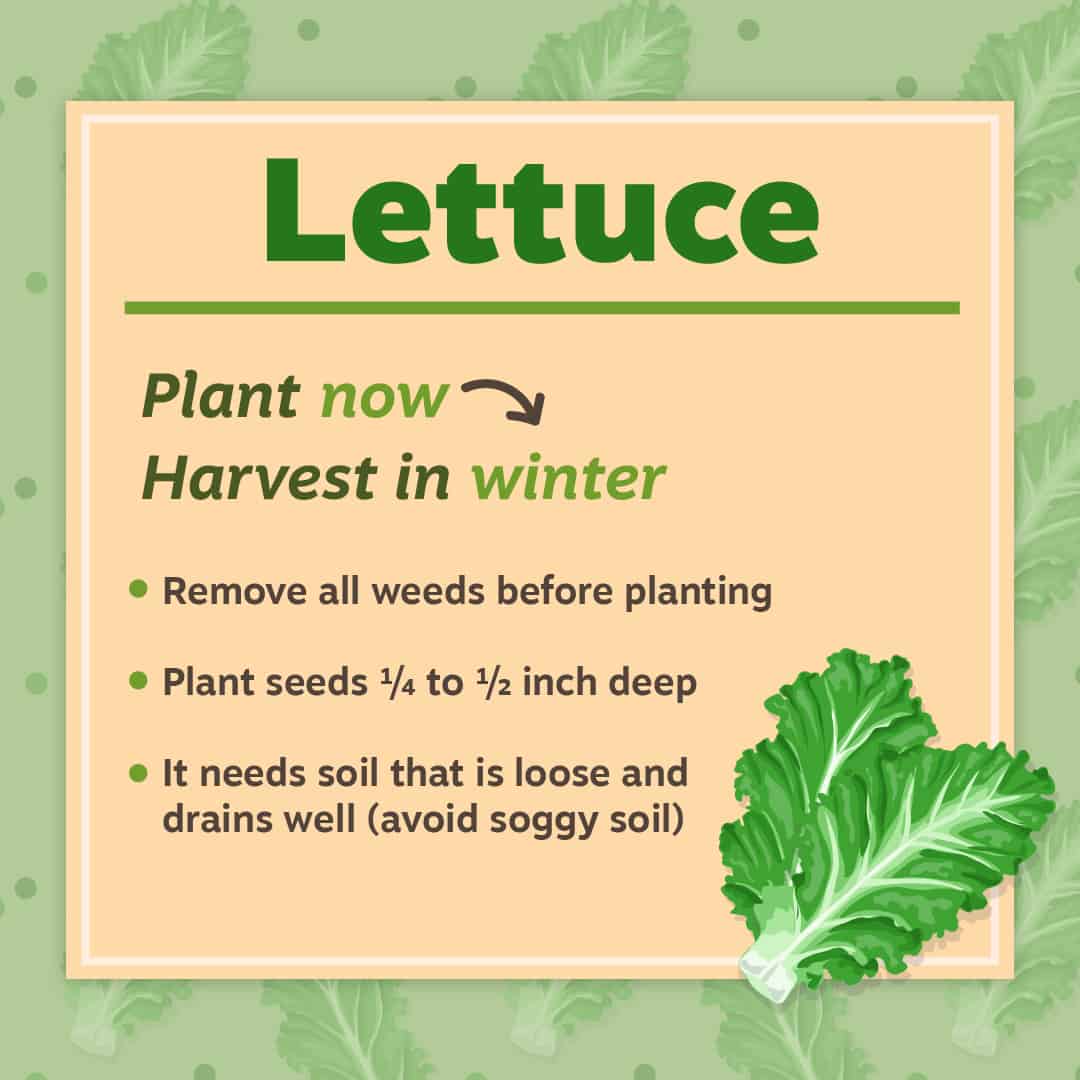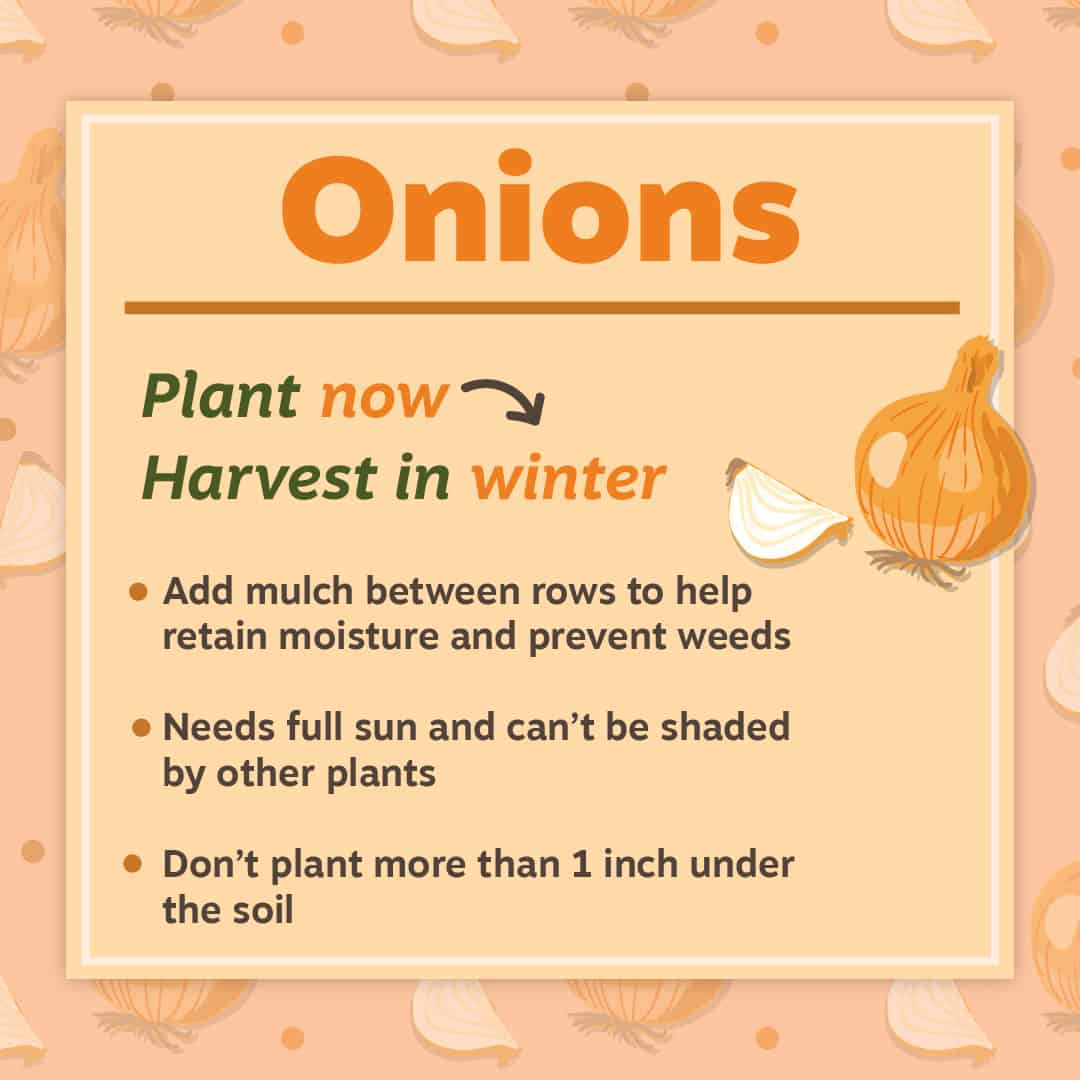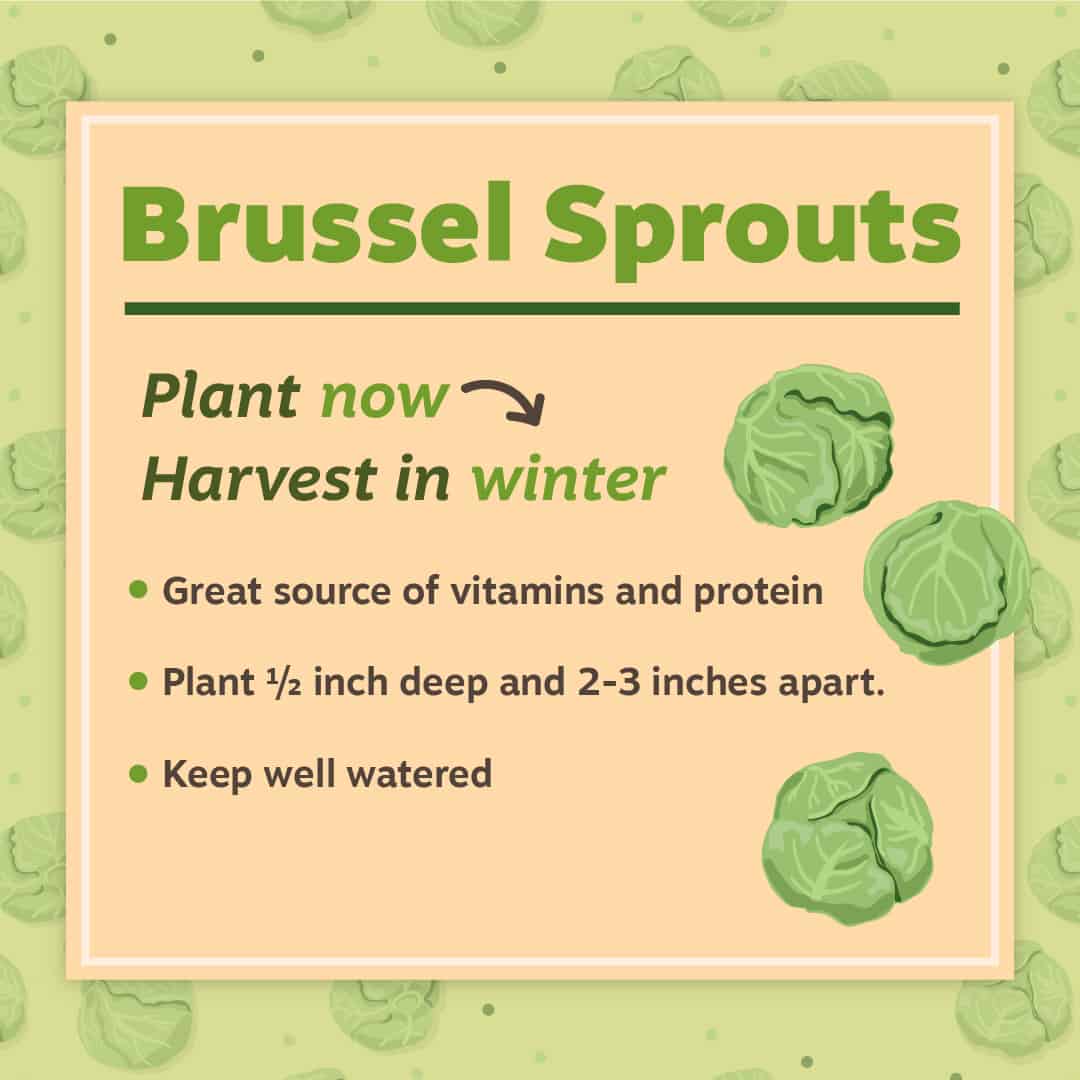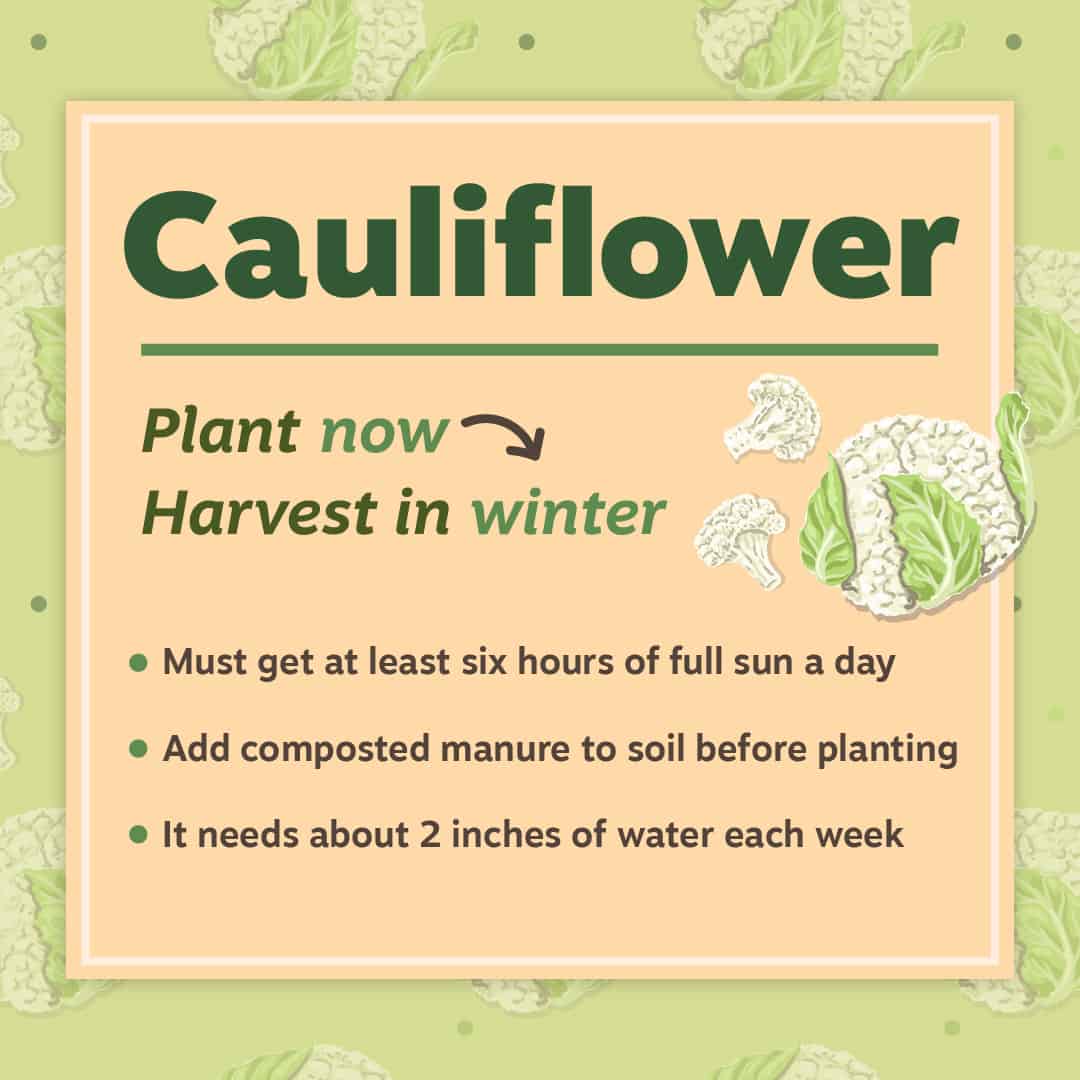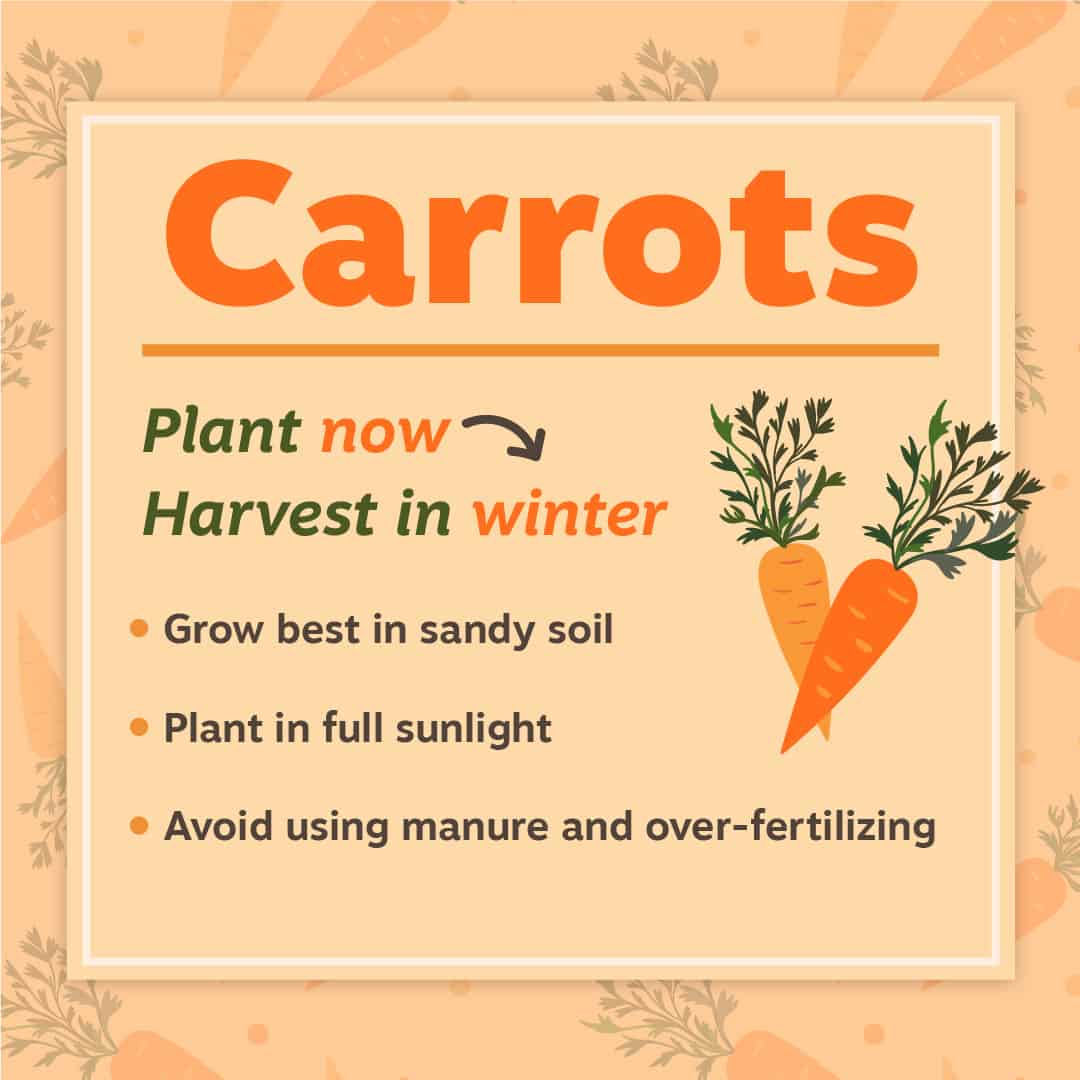October is an ideal planting time for cool-season vegetables in Southern California. Mild autumns and warm afternoons provide the perfect environment for Brussels sprouts, cabbage, kale, carrots, lettuce, and cauliflower.
Reasons to Plant in October
- Cooler Temperatures: These crops flourish in cooler weather. October’s declining heat allows seeds and transplants to establish roots without being scorched by summer sun.
- Extended Growing Season: Fall planting provides enough time for these vegetables to mature before the colder winter months set in.
- Pest Reduction: Cooler autumn weather typically means fewer pests, reducing the likelihood of destructive infestations.
- Improved Soil Conditions: Summer crops deplete nutrients, but letting soil rest between seasons or using compost rejuvenates it, making October planting especially productive.
- Fresh, Healthy Harvest: Planting now means you’ll have fresh, homegrown vegetables ready for winter dishes and holiday meals.
What to Plant in Southern California
Kale
Plant now → Harvest in winter
Kale is one of the hardiest greens and tastes even better after a light frost. Sow seeds or transplants in loose, well-drained soil. Space plants 12 inches apart, and in just 30–40 days, you’ll have tender baby kale leaves. Harvest larger leaves as the season continues.
Tips for Kale
- Rich in minerals and vitamins A & C.
- Plant seeds 1/4 to 1/2 inch deep.
- Ready to pick when leaves are about the size of your hand.
- Mulch around plants to retain moisture and suppress weeds.
- Remove yellowing leaves to encourage new growth.
Lettuce
Plant now → Harvest in winter
Lettuce grows quickly, with some varieties maturing in as few as 30 days. It’s perfect for fall gardens, as it thrives in cool temperatures. Sow seeds directly or start transplants. Space them 8 inches apart and water regularly for tender, crunchy leaves.
Tips for Lettuce
- Remove all weeds before planting.
- Plant seeds 1/4 to 1/2 inch deep.
- It needs soil that is loose and drains well (avoid soggy soil)
- Opt for a mix of lettuce varieties to diversify textures and flavors.
- Use row covers to protect young plants from heavy rain or temperature dips.
Onions
Plant now → Harvest in winter
These aromatics thrive in cooler temperatures and need 4–6 weeks of cool weather for optimal growth. Plant them from bulbs or sets, spacing them 4–6 inches apart with the pointed end up. Harvest when leaves turn yellow after around five months.
Tips for Onions
- Add mulch between rows to help retain moisture and prevent weeds.
- Needs full sun and can’t be shaded by other plants.
- Don’t plant more than 1 inch under the soil.
- Water regularly for plump, flavorful bulbs.
- Harvest when the tops turn yellow and start to fall over.
Brussels Sprouts
Plant now → Harvest in winter
Brussels sprouts love long, cool growing seasons. Plant transplants in nutrient-rich soil, spaced 18–24 inches apart. Ensure they get 6–8 hours of full sun and consistent moisture. They typically need 90–120 days to reach harvest, so starting in October gives them the time they need.
Tips for Brussels Sprouts
- Great source of vitamins and protein.
- Plant 1/2 inch deep and 2–3 inches apart.
- Keep well watered.
- Add compost or well-rotted manure before planting.
- Use a stake to support the stalk as it grows taller.
Cauliflower
Plant now → Harvest in winter
Cauliflower prefers consistent cool weather, making October a great planting time. Transplants should be spaced 18–24 inches apart in fertile, well-drained soil. The plants will produce beautiful white heads in 75–85 days.
Tips for Cauliflower
- Must get at least six hours of full sun a day.
- Add composted manure to soil before planting.
- It needs about 2 inches of water each week.
- Use mulch to moderate temperature and conserve moisture.
- “Blanch” the heads by tying leaves over them when they’re about 2 inches wide to prevent sunlight from yellowing the florets.
Carrots
Plant now → Harvest in winter
Carrots germinate best in cooler soil, making October ideal for direct sowing. Choose a sunny area and plant seeds 1/4 inch deep and 3 inches apart. Carrots mature in 60–80 days, but smaller “baby” carrots are ready in about a month.
Tips for Carrots
- Grow best in sandy soil.
- Plant in full sunlight.
- Avoid using manure and over-fertilizing.
- Loosen soil to encourage straight root development.
- Thin seedlings early to avoid overcrowding.
FAQs: October Planting Tips
Q: Can I start seeds indoors and transplant them?
This works well for lettuce, kale, and onions. Start transplants 4–6 weeks before the first frost date.
Q: Is there anything special I need to do to protect my vegetables from heavy rain or cooler temperatures?
Using a row cover can provide some protection from extreme weather while still allowing sunlight and water to reach your plants.
Q: What if I don’t have a large garden? Can these fall crops be grown in containers?
Most of these cool-season vegetables can thrive in pots as long as they get enough sun and water.
Q: How often should I water my fall vegetables?
Cool-season crops generally require consistent moisture. Water deeply at least once a week, or more frequently if the weather is dry.
Q: When should I start harvesting my fall crops?
Harvest times vary by crop — check the maturity dates for each vegetable. For example, lettuce and kale can often be harvested within 30–40 days, while Brussels sprouts may take 90–120 days to mature.
Q: Do I need to fertilize my fall crops?
Yes, adding compost or a balanced fertilizer before planting will enrich the soil. Additionally, some crops, like Brussels sprouts or cauliflower, may benefit from mid-season feeding if their growth appears slow.
Q: Can I reuse soil from my summer crops for fall planting?
Soil can be reused if nutrients are replenished first. To revitalize the soil and improve its structure, add compost, organic matter, or a slow-release fertilizer.
Q: How can I extend the growing season of my fall vegetables?
Using cold frames, cloches, or row covers can protect plants from frost and extend their growing season. These methods create a slightly warmer environment, ensuring a longer harvest period.

